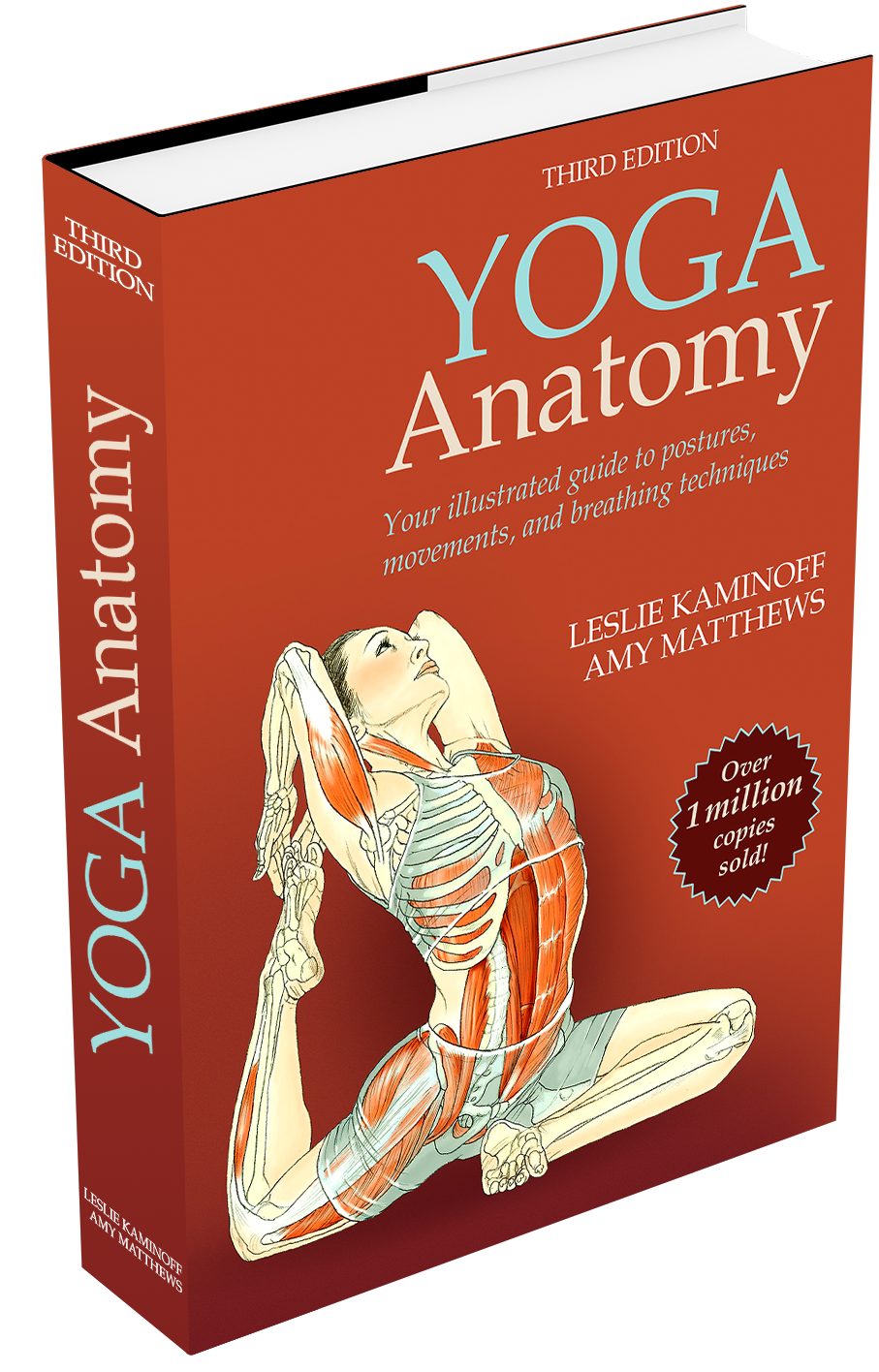Hanumanasana

hanumat = having large jaws: a monkey-chief
Notes
In this extreme pose, the forward-bending action in the front leg and pelvic half is countered by the backward-bending action in the back leg and pelvic half. The spine can then seek balance between those two opposing actions.
In a symmetrical forward bend like paschimottanasana (page 132), part of the action of forward bending comes from the spine, as well as the lower limbs. Similarly, in a back bend like urdhva dhanurasa (page 249), the backward-bending action comes from the lower limbs and spine together. In hanumanasana, however, the fact that the two legs are doing opposite actions means that the forward-bending and backward-bending actions are directed almost totally into the legs, making both aspects more intense.
Because there is generally more range of motion for the hip joint in flexion than in extension, the front leg usually moves more quickly into flexion and the movement of the back leg draws the spine into extension. This is also why more work is often felt in the extensors of the front leg than in the flexors of the back leg. The action in each leg is limited by the opposite leg, making it a kind of bound pose. This limitation means that force isn’t dispersed into space so much as directed into potentially vulnerable areas (hamstring attachments are especially at risk for overmobilizing in this pose). This concern is greatly compounded if the pose is done passively.
The presence of gravity means that it isn’t necessary to concentrically contract any muscles to pull the body into this position; instead, the weight of the body itself deepens the action. To do the pose safely, however, the body is not just passively releasing into gravity.
If hanumanasana is done more actively, with attention to the eccentric actions of the lengthening muscles, the mobilization of the pose can be distributed over several joints; a little movement in a lot of places can safely distribute the force. This requires awareness of your own tendencies toward places you hold or let go so that you can stabilize the mobile spots and mobilize the fixated areas.
A final note about having the legs in neutral rotation: While the position of the legs is neutral in terms of internal and external rotation, it actually takes active internal rotation to maintain this neutral position. A neutral position in the joint is not always the position with the least muscular effort, depending on the actions of gravity and the other limbs. Maintaining a neutral position can often be a quite vigorous action muscularly.
In this pose, many people let the back leg externally rotate to get it all the way down. Letting the back leg roll out puts twisting pressure into the lumbar spine and the SI joint of the back leg, not to mention a twisting pressure into the back knee. It also puts more pressure into the adductors of the back leg (adductor longus and brevis, pectineus, and gracilis) without the eccentric support of the iliacus and psoas major or rectus femoris. As a result, the groin can be overmobilized, and the usually overtight rectus femoris doesn’t get as much movement as it could. It takes a different kind of discipline to resist the impulse to go as low as possible and to use props (blocks and blankets) as necessary to maintain the integrity of the pose.
Images from the book Yoga Anatomy by Leslie Kaminoff & Amy Matthews displayed on this website are used under license.

Love Learning with Leslie?
Study with him personally online, from anywhere in the world.
Which course is right for me?
